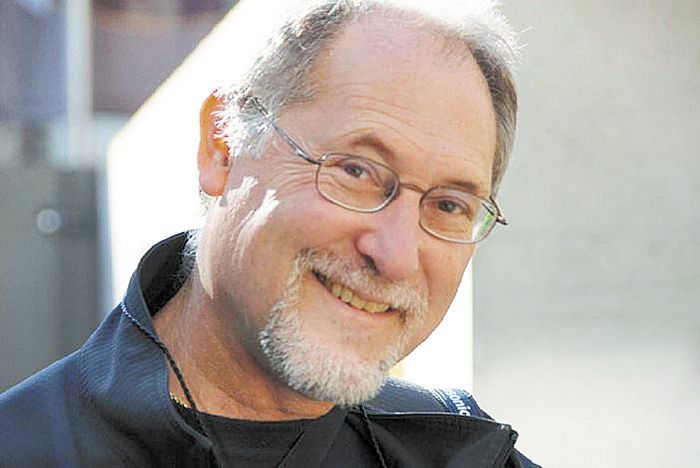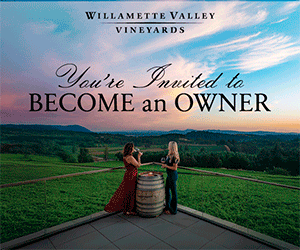Mingling with a Master

A quaffable, quotable Q&A with Joel Butler, MW
As one of the first two resident American Masters of Wine (1990), Joel Butler, MW, has had a long and varied career in the wine industry.
Born in Denver, Butler graduated from Stanford University, and also received a master’s degree in European history from the University of Colorado.
Shortly after graduation from Stanford, he returned to Europe in 1972, visiting wine regions, participating in a Burgundy harvest and gathering information for an industry organization his father represented. This experience, combined with attending university in Italy inspired him to return to California in the spring of 1973 and enter the wine trade.
Butler has spent more than 40 years as a wine buyer, importer, distributor, and more recently as Education Director at Diageo Wines and Chateau Ste. Michelle Wine Estates. He has also been a highly regarded wine judge, sitting on prestigious panels around the world.
In 1977, Butler started writing professionally for Vintage magazine. Subsequently, he wrote for The International Wine Cellar, Los Angeles Times and The Independent on Sunday of London, to name a few. His latest book, “Divine Vintage: Following the Wine Trail from Genesis to the Modern Age,” was published in 2012.
Until mid-2013, Butler was president of the Institute of Masters of Wine, North America, Ltd., helping coordinate the annual North American seminar program. Currently, he is an instructor for the Wine & Spirits Education Trust (WSET) courses offered through his company, WineKnow LLC, as well as a part-time consultant and blogger under the same name.
Butler’s outside interests include archaeology, ancient coins, Southwest Indian art, photography, music and reading, as well as historical research. Butler began making wine (non-commercially) in 1980, and has since produced many award-winning wines at the California State Fair and Orange County Fair.
Butler lives in Seattle and has one daughter, Karin.
In regard to wine, what is Oregon doing right? In what areas can Oregon improve?
JB: Oregon is definitely correct to pursue continued development of the sub-AVA concept so long as it really tries to get the empirical basis for these more refined and clarify to the public the differences. This is primarily relative to Pinot Noir, of course. Oregon has also been overall very correct in emphasizing quality over quantity, sustainability over overdevelopment and getting people to understand the value of low impact farming for maintaining Oregon’s landscape going forward.
Where can it improve? Give greater attention to the excellent vineyard areas in Southern Oregon and help to better promote them and their tourism value. Oregon can also do a better job to promote other varieties besides Pinot Noir. I think there is a great future here (even in the northern coastal areas) for Albariño, Grüner Veltliner and more Riesling. Another area that needs to be promoted is the Hood River/The Dalles area.
Besides Pinot Noir, which varietal has the most potential in Oregon?
JB: See above. But I do think that Albariño could do really well in the Willamette Valley. After all, its homeland in Spain and Portugal is a similarly wet, coastal climate with warm summers. I also think Syrah should be promoted more. It has flexibility of style and can do well in all areas.
As a Master of Wine, what’s the best advice to aspiring sommeliers?
JB: Pursue the MW (Master of Wine), not the MS — joking. Seriously, sommeliers should consider spending less time trying to memorize trivial details about all wines, etc., and pay more attention to the kinds of stories and background of a producer, region or wine that “excites” a diner to try it. They might want to also worry less about trying to match wines to particular dishes and do more to give diners the kind of wine that meshes with the diner’s preferences yet contributes a new twist, so to speak.
Knowing you’ve had many memorable wines, can you share with OWP readers one wine experience that has never left your palate? What made this particular wine so special?
JB: That’s tough! But...drinking a half-bottle of 1893 Château d’Yquem after finishing up graduate school one night with my housemate in 1975. It was liquid gold and a beautiful reminder of a different age, as well as a great wine coming from the hottest vintage of the 19th century. Also, about 12 years ago with a group of MWs at French Laundry an amazingly vibrant, delicious and youthful (still!) bottle of 1795 Terrantez Madeira, decanted from oak around 1878 into glass demi-johns, then bottled sometime in the 1980–’90s (I don’t remember). It was either a Barbeito or Blandy’s (but I don’t recall). It was spectacularly good and wonderful to share with a group of people who appreciate this kind of wine and its historical odyssey.
If could build a winery anywhere in the world, where would it be, and what wine varieties would you produce?
JB: Money aside, I would love to make wine in Côte-Rôtie — Syrah, of course; [in the region of] Mount Etna, [I would love to make] the local Nerello but also a wonderful Turkish variety I fell in love with [called] Kalecik Karasi; or, finally, Riesling in the Wachau or Kamptal of Austria.
Any new books or exciting news to share with OWP readers?
JB: Well, not exactly new but only one year old, our book: “Divine Vintage: Following the Wine Trail from Genesis to the Modern Age” (Palgrave-Macmillan) was published in 2012. I co-authored the book with my friend and biblical scholar Dr. Randall Heskett. It is not religious — far from it — but it combines biblical history, interpretation with modern historical/archaeological study to look at wine’s importance regarding the spread of Western culture. It also examines today’s wines being made in the biblical lands, or the Eastern Mediterranean. It is a unique book! I was thinking of working on a revision of this book, focused solely on the modern wines, but have decided to get more active with my blog at www.mywineknow.com. I would also like to recommend my old friend, Clark Smith’s, new book, “Postmodern Winemaking: Rethinking the Modern Science of an Ancient Craft.” It is really good.










